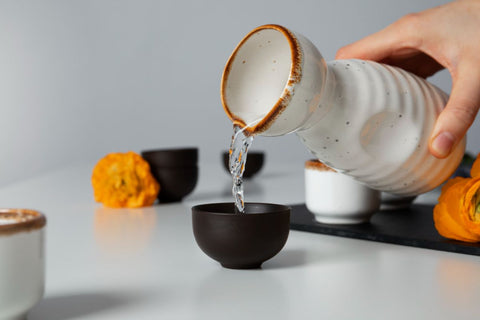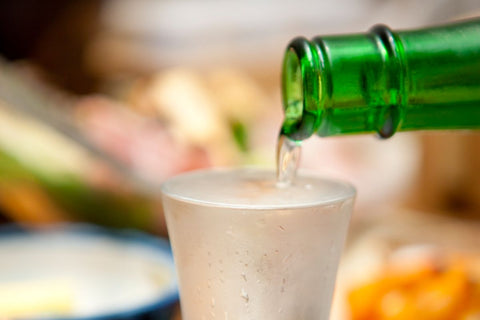Overview
- Sake is classified into different grades, such as Daiginjo, Ginjo, Futsu-Shu, Tokutei Meishousu, and Tokusen.
- The rice polishing ratio, or seimaibuai, is crucial in shaping the quality and flavor of sake. Sakes with lower polishing ratios offer refined and complex profiles, while those with higher ratios provide bolder and fuller-bodied experiences.
- Consider your taste preferences when selecting a sake based on the rice polishing ratio, explore different sake grades to discover your favorites, and seek recommendations from knowledgeable staff to uncover hidden gems perfect for any occasion.
Sake, the traditional Japanese rice wine, has transcended cultural boundaries and garnered popularity worldwide, captivating enthusiasts from Japan to the Philippines and beyond.
Its versatility and rich flavors make it a favorite libation for various occasions. However, as delightful as it is on its own, there are methods to tailor it to your preferences further. This is where understanding sake grades and rice polishing ratio comes into play.
In this article, we will explore the different types of sake and how they can elevate your drinking experience. This will help you deepen your appreciation for this beloved beverage and navigate the diverse world of sake with confidence.
What is a Sake Grade?

Sake grade is the classification system that categorizes different types of sake based on the brewing process, ingredients, and quality. These grades encompass a spectrum of styles, from the refined and aromatic Daiginjo to the more robust and full-bodied Futsu-Shu.
Each grade offers a unique drinking experience, reflecting the skill and craftsmanship of the brewers.
The Different Types of Sake Grades
- Daiginjo - Known for its unparalleled purity and complexity, sake like Gekkeikan the Shot Daiginjo is crafted from polished rice to at least 50% of its original size. This meticulous polishing process produces a smooth and refined brew with intricate aroma and nuanced flavors.
- Ginjo - This sake is celebrated for its elegant aroma and delicate flavor profile, achieved by fermenting it at lower temperatures for an extended period. The rice used in this beverage is polished to at least 60% of its original size, resulting in a more refined and aromatic brew.
- Futsu-Shu - Also known as table sake, this versatile and approachable style of sake is enjoyed by casual drinkers and enthusiasts. Gekkeikan Traditional Sake is an example. It is typically less polished than premium sake grades and offers a more robust and rustic flavor profile.
- Tokutei Meishousu - This grade of sake encompasses a range of designated sake categories, each defined by specific brewing methods and ingredients. Examples include Junmai and Honjozo, which offer distinct flavor profiles and characteristics.
- Tokusen - It refers to premium brands crafted with exceptional care and attention to detail. These brands often feature unique brewing techniques and high-quality ingredients, resulting in a superior drinking experience.
What is the Rice Polishing Ratio?

The rice polishing ratio, also known as seimaibuai, is a vital aspect of the sake brewing process. It measures the percentage of the outer layer of the rice grain that has been polished away and plays a key role in shaping the quality and flavor of the sake.
Sakes with lower polishing ratios are celebrated for their refined and complex profiles, while those with higher ratios offer a bolder and fuller-bodied experience. Understanding this ratio can enrich your appreciation of the diverse range of sake varieties available.
This will also allow you to explore and savor the unique flavors that each ratio contributes to the sake.
How to Choose Sake Based on Grades and Polishing Ratio?
It is, without a doubt, important to consider sake grade and polishing ratio when choosing a drink that suits your taste. But you might need help with all the resources online and the different variations out there. That’s why we collected some tips to guide you:
Consider Your Preferences
When considering the rice polishing ratio in sake, it's important to consider your taste preferences. If you prefer light and delicate sake, you might enjoy varieties with a lower polishing ratio.
On the other hand, if you lean towards fuller-bodied options, sakes with a higher polishing ratio might be more to your liking, as they offer bolder and richer profiles.
By understanding your preferences, you can make informed choices and explore sakes that align with your taste preferences, leading to a more enjoyable and personalized sake experience.
Choose a Polishing Ratio that You Want
When selecting a sake, it's essential to consider the polishing ratio of the rice used in its production. This ratio, indicating the percentage of the rice grain that remains after polishing, significantly influences the sake's flavor profile and complexity.
For instance, sakes with a lower polishing ratio, such as those around 70%, tend to have a richer and fuller-bodied flavor with earthy and robust characteristics. On the other hand, sakes with a higher polishing ratio, like those at 50% or lower, undergo extensive refining, resulting in a cleaner and more delicate flavor profile with fruity and floral notes.
By choosing a polishing ratio that aligns with your preferences, you can enjoy sake flavors tailored to your palate, whether you prefer bold and robust or delicate and refined profiles.
Explore Different Sake Grades
Exploring the diverse range of sake grades is an exciting journey into the world of Japanese rice wine. From the pinnacle of refinement represented by Daiginjo to the more approachable Futsu-Shu, each grade offers a distinct flavor profile and drinking experience.
- Daiginjo, with its meticulous polishing process and delicate aromas, embodies elegance and sophistication, making it perfect for special occasions.
- Junmai, with its rich umami flavor and robust body, is ideal for pairing with hearty dishes.
- Futsu-Shu, the everyday sake, strikes a balance between affordability and quality, making it a versatile choice for casual enjoyment.
By exploring these grades, you can uncover the nuances of sake and find the perfect match for your palate.
Experiment with Varieties
When exploring the world of sake, it's helpful to adopt an attitude of experimenting and discovery. It's crucial to experiment with various sake within each grade and polishing ratio without hesitation.
You can broaden your palette, learn more about the subtleties of flavor profiles, and develop an appreciation for the variety found in the sake industry by trying a variety of selections. This method lets you find hidden treasures and possibly even new favorites that suit your tastes.
Seek Recommendations
Engaging with the experienced staff at sake stores or attending tastings offers an opportunity to tap into their expertise. By discussing your preferences and sharing your past experiences with sake, you can receive tailored recommendations that align with your taste profile.
Their guidance can lead you to unearth hidden gems and discover the perfect sake for any occasion, whether it's a quiet evening at home or a celebratory gathering.
Key Takeaway
Understanding sake grades and polishing ratio opens up a world of possibilities, allowing enthusiasts to explore and appreciate this beloved beverage's diverse flavors and styles.
By delving into the intricacies of sake classification, drinkers can embark on a journey of exploration and discovery, uncovering new favorites and enriching their appreciation for Japanese rice wine.
Ready to explore the world of sake grades and polishing ratios? Visit Ralph's Wines and Spirits today to discover an exceptional selection of sake options tailored to suit your preferences.
Let our knowledgeable staff guide you through our collection and help you find the perfect sake for your next celebration or a quiet evening at home. Shop with us now!



